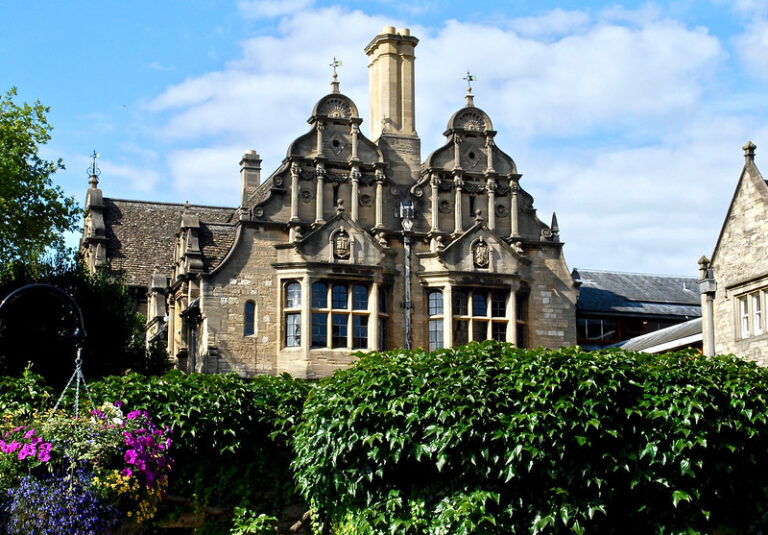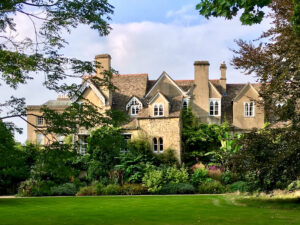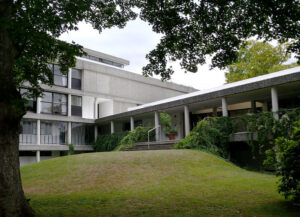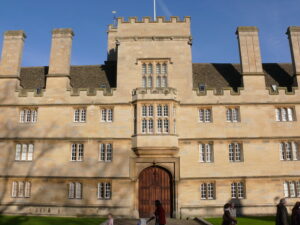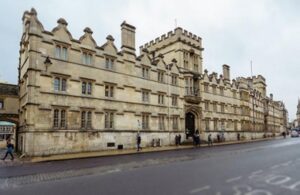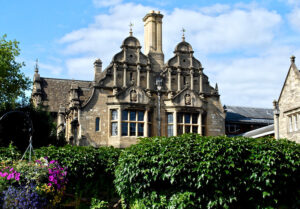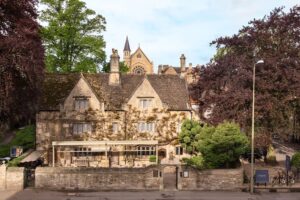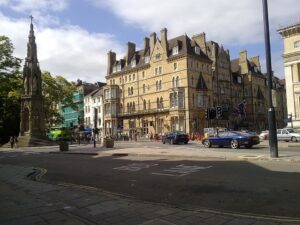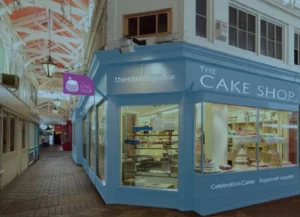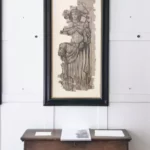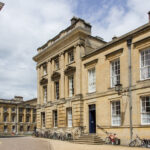Trinity College is one of the constituent colleges of the University of Oxford in England. Founded in 1555 by Sir Thomas Pope, the college once housed Benedictine monks from Durham Cathedral.
Despite its large size, the college is relatively small in terms of student numbers at approximately 400. It was founded as a men’s college and became coeducational in 1979.
Trinity College has produced three prime ministers, placing it third in terms of former students who have served in that position after Christ Church and Balliol.
What's the History of Trinity College?
Trinity College stands on what was originally Durham College, built for Benedictine monks from Durham Cathedral (which was founded in 1291). The site was surrendered to the crown in March 1545 and granted to private owners in 1553 (during the period of Protestant Reformation). Civil servant Thomas Pope acquired it in 1555 and founded Trinity College 16 days later. Pope was a Catholic with no surviving children and hoped that by founding a college he would be remembered in the prayers of its students. His remains are still encased beside the chapel altar.
The original foundation of Trinity College provided for a president, 12 fellows, and 12 scholars, as well as for up to 20 undergraduates. The fellows were required to take Holy Orders and to remain unmarried.
The Trinity-Balliol Rivalry
There has been a traditional and fierce rivalry shown between the students of Trinity and those of its immediate neighbour to the west, Balliol College. This rivalry manifests on the sports field and the river, in the form of songs, and in “raids” on the other college.
The Buildings of Trinity College
Trinity College’s main entrance is enclosed by an iron palisade rather than a wall, and the distinctive blue gates provide it with a more open and accessible appearance than many others in Oxford.
The Durham Quadrangle
Durham College (the original Benedictine college from 1291) was built around a single quadrangle, now known as the Durham quad.
The Chapel
Consecrated in 1694, this chapel was the first college chapel to be designed entirely in the Baroque style. It was designed by Henry Aldrich, with advice from Christopher Wren.
The Garden Quadrangle
Designed by Christopher Wren and built in 1665–1668, the north side of the quad is a freestanding block. The west side was added to the same plan in 1682.
The Front Quadrangle
The front quad was formed by the new buildings (1883–1885) and the president’s lodgings (1885–1887). These were both designed by Thomas Graham Jackson. The quad also includes some older buildings on Broad Street (four old cottages and Kettell Hall, a stone house built by President Ralph Kettell).
The Library Quadrangle
This quadrangle was built as a memorial to members of the college who perished in World War I. The building was designed by architect Mr. J. Osborne Smith. The Cumberbatch buildings to the north and south were designed by Maguire and Murray and built in 1964–1966.
What is it Like to Study at Trinity College, Oxford?
Trinity College offers accommodation to all undergraduate students. First and second years are housed on the college’s main site, and third and fourth years in college buildings on the Woodstock Road.
The Trinity College Chapel Choir consists of up to eight choral scholars and over thirty voluntary singers. The choir frequently goes on annual tours.
Where is Trinity College?
Trinity College is located on Broad Street (OX1 3BH), Oxford. Tel 01865 279900.
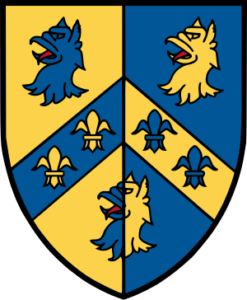
Can you Visit Trinity College?
Yes, Trinity College is open to the public.
- Open: 09.30- 18.00 during summer and 09.30-dusk during winter.
- Charge: Adults £3; seniors, children £2. No charge for group leaders or teachers accompanying school groups.
- Groups: Advance booking recommended to avoid disappointment.
